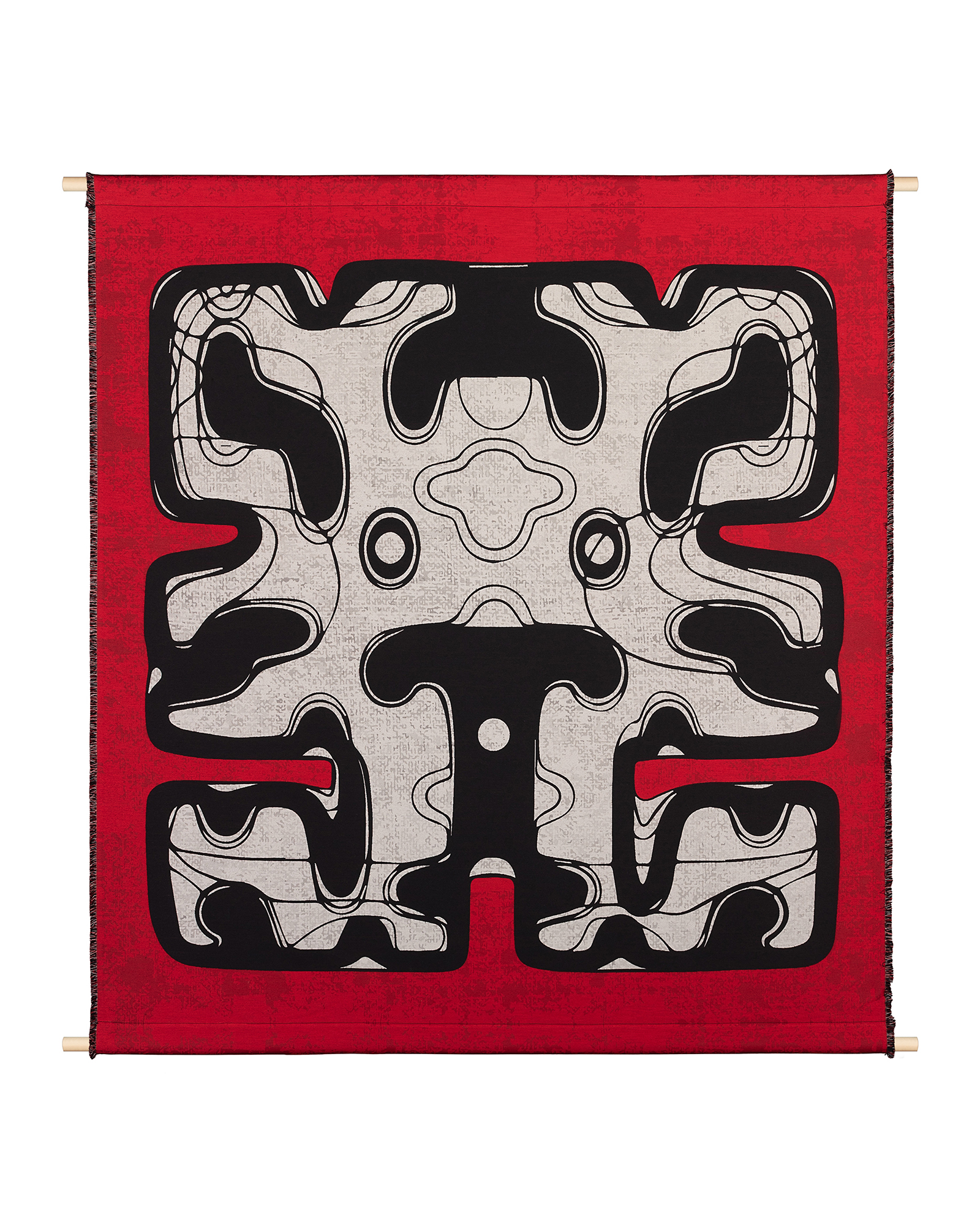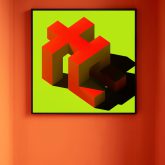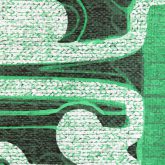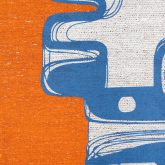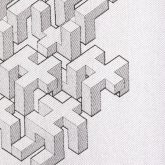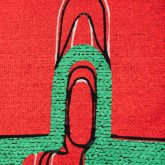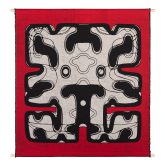Alessandro Pongan — TOTEM – EX VOTO curated by Susanna Ravelli
You enter and the air vibrates. TOTEM – EX VOTO doesn’t exhibit; it invokes. Within the framework of AAA – Atelier Aperti per Artista at Casa degli Artisti—where research is born through iteration and return—Alessandro Pongan’s work finds its most natural shape: a living laboratory in which the passage between digital and material isn’t a special effect but the very principle of creation. Here spirituality doesn’t declare itself; it operates. The language is sacred and, at the same time, invented; idols are not cited but generated, as if collective memory had been waiting for them.
At the center of gravity stands the Prono, the anti-Vitruvian: not the man inscribed in the perfection of verticality, but a terrestrial posture, charged, ready to spring. Geometric and archaic, with echoes of Moai and Mesoamerican cosmologies, yet capable of speaking the pop lexicon of manga and graffiti. It is a double archetype: sacrifice and acceleration. You look at it and recognize a primordial gesture; you listen to it (because in front of the Prono, the body falls quiet) and you sense the tension of someone holding breath before the start. “Years ago I began to grapple with the dimension of the sacred… in the middle of that process the Prono emerged,” Pongan says: not a figure he found, a figure that finds you.
From here the narrative unfolds like a liturgy of form. First the figure appears, full and dense, in figurative composition: bronze concentrates force in a kneeling posture that is gathering, not surrender; a seal of energy, a body that absorbs the world in order to return it as impulse. Then the image reduces to surface: the Prono becomes a weave, multiplied into a hypnotic jacquard where the eye oscillates between pattern and presence; elsewhere it condenses into a circular emblem, a coin for a secular altar. In the urban landscape born of lockdown, its silhouette wedges itself among mute towers and perspectives: not a monument but the muscle of the city, a resilience that occupies space without clamor.
When it returns three-dimensional, the sculpture seeks materials the way a voice seeks its proper accents. Outdoors at Casa degli Artisti, Prono — Alla Resistenza—gabions in expanded steel and lava stone—stands as the exhibition’s exterior sentinel: a grounded, massive bulwark that condenses the archetype into memory and resistance. Inside, oxidized steel brings the posture into contact with industrial roughness—and the figure holds—while solidified sand turns fragility into block, a tactile oxymoron of stubborn durability. Beyond the exhibition, the public outdoor work “Gigantino del Parco Balossa”—a pipe armature in the Balossa green corridor between Novate and Cormano, conceived to be colonized by climbing plants—turns the totem into an organism whose seasonal skin certifies time as a material. And in the vision of a photovoltaic colossus, Red Giant, cult and function coincide, because here renewable energy also has a form.
Just when presence seems complete, Pongan reopens the body and moves through it. Nylon prints show the skeleton of force lines: the sculpture as a living diagram. A “CT scan” of the figure—edited in loop—lets interiority surface in metamorphosis: coils, cavities, ancestral morphologies that then migrate onto graffitied panels, tapestries, jacquards, digital lightboxes. In the end everything gathers into a perfect square: an algorithmic heartbeat, a breath of image. This is not dispersion; it is controlled multiplication. Each passage doesn’t consume but ignites; every fragment remains operative, a living relic that preserves and relaunches the work’s aura.
Here the comparison with Francesco Vezzoli clarifies the gesture: if in his tear-streaked icons glamour pierces the sacred to expose its raw nerves, Pongan performs the reverse operation. He doesn’t prettify the icon; he opens the totem technically—3D scans, tessellations, re-emergences as tapestry, nylon, lightbox—so that the aura circulates more freely. Vezzoli sets the surface ablaze until it becomes the liturgy of spectacle; Pongan maps the inner anatomy of the cult and puts it to work. It’s the same oscillation between devotion and show business, but here the stage is matter: believing today coincides with the capacity to survive multiplication, to remain oneself while dividing.
The audience moves before the totems as if in a magnetic field: some slow down and instinctively lower themselves, as if to answer the posture of the Prono; others stand still, as if truly waiting for the leap. It’s a minimal theater, but decisive: you don’t just look at a sculpture—you assume its posture. And the meaning of EX VOTO sharpens: not the intangible, but transformation without dissolution. Every medium—sculpture, video, graffito, tapestry, digital—is a potential altar, a renewed promise. When the totem touches infrastructure—when a tubular flow exits the museum and the city responds (reference to La Salamandra, 2019: a large-scale carbon-steel pipeline installation conceived to extend from the museum into the city, a project beyond this exhibition), you realize you’re no longer in front of an object: you’re inside a conductor, a porous system linking art, territory, and technology.
Everything concentrates into a simple truth. The Prono bends to listen, recomposes to endure, multiplies to remain. It doesn’t ask for adoration; it asks for complicity. And in its held-back spring—bronze, weave, steel, light—you recognize your own way of resisting.
(Exhibition: Alessandro Pongan — TOTEM – EX VOTO, Casa degli Artisti, Milan, September 1–19, 2025; opening reception September 4, 6:00 pm.)
Short note: Alessandro Pongan (La Spezia, 1963) lives and works in Milan; trained in Visual Design, with long experience across scenography, exhibition design, and video; since 2017 he has developed the Proni cycle across sculpture, weaving, moving images, and generative art.
